A ray of light passes through a right angled prism as shown in the figure. State the angle of incidence at the faces AC and BC.
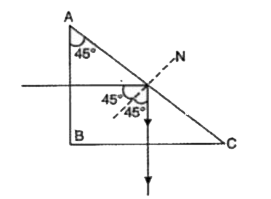
Since light ray enters normally to the face AB and also emerges normally to face BC, angle of incidence at both faces is zero.
Similar Questions
A ray of light XY passes through a right angled isosceles prism as shown alongside.
What is the angle through which the incident ray deviates and emerges out of the prism ?
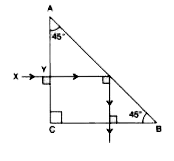
View SolutionA ray of light XY passes through a right angled isosceles prism as shown below.
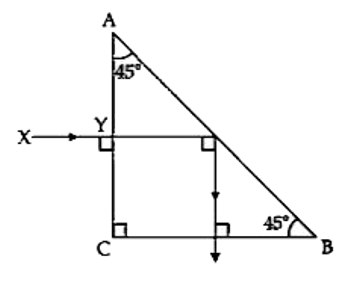
What is the angle through which the incident ray deviates and emerges out of the prism?
View Solution
Knowledge Check
A ray of light passes through a prism as shown in the figure.
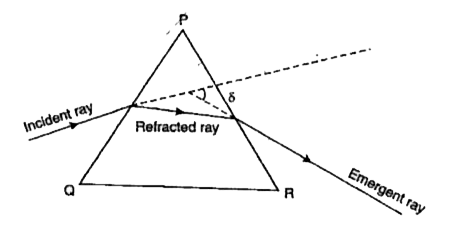
The angle δ is known asAangle of deviationBangle of dispersionCangle of emergenceDangle of refractionA ray of light passes through an equilateral prism such that the angle of incidence is equal to the angle of emergence and latter is equal to (3/4)th the angle of prism. The angle of deviation is
A45∘B39∘C20∘D30∘A ray of light passes through an equilateral prism such that the angle of incidence is equal of emergence and later is equal to 3/4th the angle of prism. The angle of deviation is
A45∘B20∘C39∘D30∘
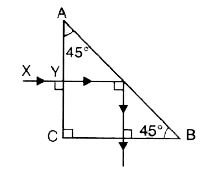
A ray of light XY passes through a right angled isosceles prism as shown alongside Figure.
(a) What is the angle through which the incident ray deviates and emerges out of the prism?
9b) Name the instrument where this action of prism is put into use.
(c) Which prism surface will behave as a mirror ?
View SolutionThe path of a ray of light passing through an equilateral glass prism ABC is shown in figure. The ray of light is incident on face BC at the critical angle for just total internal reflection. The total internal reflection. The total angle of deviation after the refraction at face AC is 108∘. Calculate the refractive index of the glass.
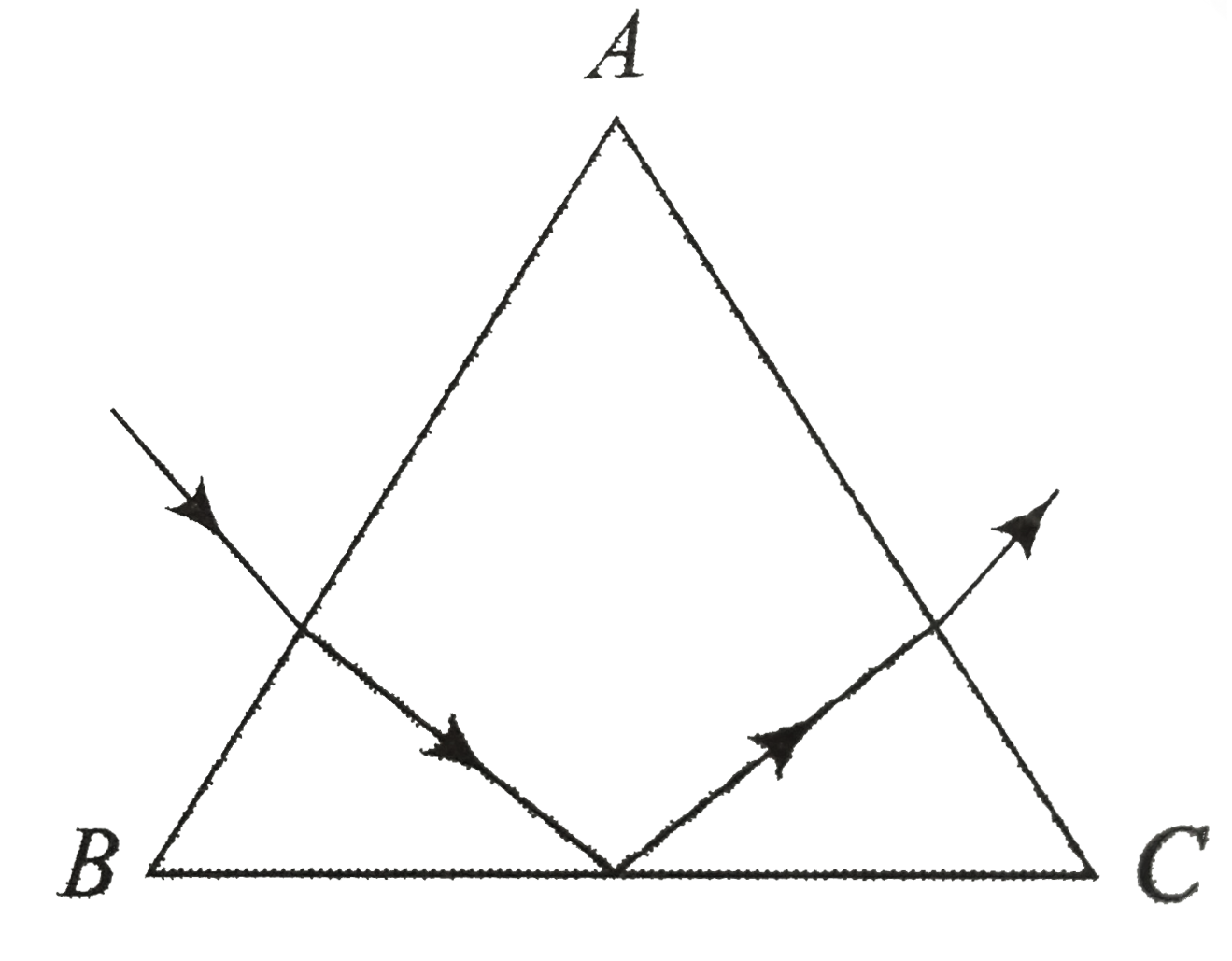
View SolutionThe path of a ray of light passing through an equilateral glass prism ABC is shown in figure. The ray of light is incident on face BC at the critical angle for just total internal reflection. The total internal reflection. The total angle of deviation after the refraction at face AC is 108∘. Calculate the refractive index of the glass.

View SolutionA ray of light passes through the equilateral prism such that angle of incidence is equal to the angle of emergence if the angle of incidence is 45∘. The angle of deviation will be
View SolutionRays of light pass through an equilateral prism such that the angle of incidence is equal to the angle of emergence and the latter is equal three-fourths the angle of the prism. The angle of deviation is
View Solution
